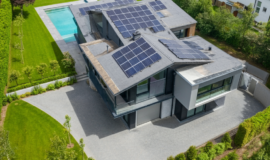Energy Storage: Pros and Cons
The future of energy storage technology looks bright and promising. According to the Energy Storage North America (ESNA) conference held last week at San Jose, California, there is an optimistic outlook to the trends and opportunities for energy storage. As the development of energy storage evolve in the coming years, let’s take a look at the pros and cons of this technology.
Pros
Greater Use of Renewable Energy
Energy storage technology may not look vital on its own. Moreover, when backed up to solar and wind energy, it is nevertheless considered essential and important in electricity value chains. With the use of energy storage, the renewable energy that generates power would not only be used as it is produced but also as it is demanded and needed by the consumers. Battery technologies and other energy storage equipment makes it possible to store solar and wind electricity, especially now that homeowners and business establishments shift towards installing solar panels on their respective roofs.
Price Decrease
With the solar trajectory trends, it is expected that the prices of energy storage technologies would also decrease rapidly. With the rising demand of solar panels, so as the demand for the storage equipment.
Cons
These influences lead to the development and growth of new energy storage technologies. However, there are challenges that the energy industry need to overcome in relation to the adoption of new technologies in the energy storage. Here are some of the factors that may impact the energy storage ecosystem negatively.
Diversity of Energy Storage Technologies
There are many categories of energy storage. Primarily, we have to consider the chemical and non-chemical classifications. Also, we need to contemplate the solid state batteries, flow batteries, flywheels, compressed air energy storage, thermal and pumped hydro-power. Other factors with energy storage technology is the form to use, the number of charges to choose and the stable conditions in the environment. The potential market for energy storage varies depending on the function that the storage technology applies. Hence, there will be a need to further educate the consumers on what they really need so they will not be confused in making decisions that meet their expectations.
Complexity in Energy Storage Development
In the infant stage of energy storage technologies, there are usually exclusive and modified manufacturing processes that are applied. This means that the features and materials used in the development are not currently supported commercially or will not be available in the future. At the core of this advancement, the entire design of storage technologies is multifaceted.
These are just some of the many pros and cons of energy storage. The good news is that the energy storage ecosystem vendors are collaboratively working towards the continual progress of storage technologies. Customized solutions are in the process and market opportunities continues to provide positive perspective ahead.





